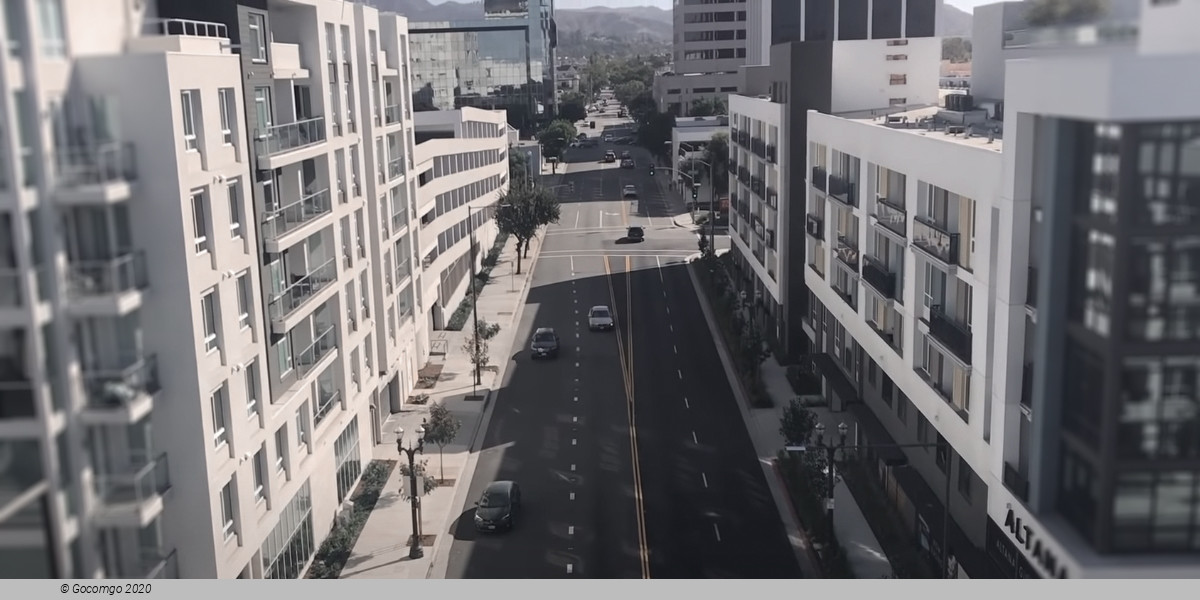Glendale

Glendale is a city in Los Angeles County, California, United States. It is located about 8 miles (13 km) north of downtown Los Angeles.
History
The area was long inhabited by the Tongva people (or "People of the Earth"), who were later renamed the Gabrieleños by the Spanish missionaries, after the nearby Mission San Gabriel Arcángel.
In 1798, José María Verdugo, a corporal in the Spanish army from Baja California, received the Rancho San Rafael from Governor Diego de Borica, formalizing his possession and use of land on which he had been grazing livestock and farming since 1784. Rancho San Rafael was a Spanish concession, of which 25 were made in California. Unlike the later Mexican land grants, the concessions were similar to grazing permits, with the title remaining with the Spanish crown.
In 1860, his grandson Teodoro Verdugo built the Catalina Verdugo Adobe, which is the oldest building in Glendale. The property is the location of the Oak of Peace, where early Californio leaders including Pio Pico met in 1847 and decided to surrender to Lieutenant Colonel John C. Frémont.
Verdugo's descendants sold the ranch in various parcels, some of which are included in present-day Atwater Village, Eagle Rock, and Highland Park neighbourhoods of Los Angeles.
In 1884, residents gathered to form a town site and chose the name "Glendale". It was bounded by First Street (now Lexington Drive) on the north, Fifth Street (now Harvard Street) on the south, Central Avenue on the west, and the Childs Tract on the east. Residents to the southwest formed "Tropico" in 1887.
The Pacific Electric Railway brought streetcar service in 1904.
Glendale was incorporated in 1906 and annexed Tropico 12 years later. An important civic booster of the era was Leslie Coombs Brand (1859–1925), who built an estate in 1904 called El Miradero, featuring an eye-catching mansion, the architecture of which combined characteristics of Spanish, Moorish, and Indian styles, copied from the East Indian Pavilion at the 1893 World's Columbian Exposition held in Chicago, which he visited. Brand loved to fly, and built a private airstrip in 1919 and hosted "fly-in" parties, providing a direct link to the soon-to-be-built nearby Grand Central Airport. The grounds of El Miradero are now city-owned Brand Park and the mansion is the Brand Library, according to the terms of his will. The brand partnered with Henry E. Huntington to bring the Pacific Electric Railway, or the "Red Cars", to the area. Today, he is memorialized by one of the city's main thoroughfares, Brand Boulevard.
The city's population rose from 13,756 in 1920 to 62,736 in 1930. The Forest Lawn Cemetery opened in 1906 and was renamed Forest Lawn Memorial Park in 1917. Pioneering endocrinologist and entrepreneur Henry R. Harrower opened his clinic in Glendale in 1920, which for many years was the largest business in the city. The American Green Cross, an early conservation and tree preservation society, was formed in 1926 (it disbanded three years later and the current organization of that name is unrelated).
Grand Central Airport was the departure point for the first commercial west-to-east transcontinental flight flown by Charles Lindbergh.
Sundown town status
Until as late as the 1960s, Glendale was a sundown town. Nonwhites were required to leave city limits by a certain time each day or risk arrest and possible violence. In the 1930s, Glendale and Burbank prevented the Civilian Conservation Corps from stationing African American workers in a local park, citing sundown town ordinances that both cities had adopted. In 1964, Glendale was selected by George Lincoln Rockwell to be the West Coast headquarters of the American Nazi Party. After a legal battle with the city of Glendale, the party moved their headquarters to El Monte in 1966.
Historic architecture
Glendale began its historic preservation program in 1977 with the designation of 28 properties as city landmarks. In 1997, the program evolved with the establishment of the Glendale Register of Historic Resources. The register now has over 100 properties. In addition, 11 properties in Glendale are listed on the National Register of Historic Places. The city's most honoured historic properties include the Catalina Verdugo Adobe, Brand Library & Art Center, Glendale Southern Pacific Railroad Depot, Grand Central Air Terminal, and Alex Theatre.

